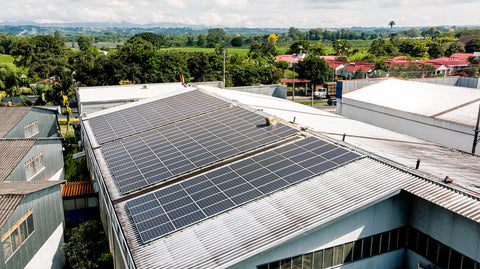Join us for a short conversation with Alejandro Cadena, the co-founder of Caravela Coffee, and a proud partner of Standart Issue 24.
Could you explain what the process of becoming the world’s first carbon-neutral-certified green coffee trading company looked like from the inside? How long did it take, and was it easier than you thought?
Measuring our carbon footprint and achieving carbon neutrality has been an enormous learning process. Our journey to become carbon neutral started in 2017 when for the first time we measured our carbon footprint, and since then, we have measured it every year, learning at every step along the way and improving our measurements, as well as being transparent with all our stakeholders about our environmental impact by publishing our carbon footprint in our annual Impact Report.
'Today, our biggest challenge is that we can’t do this alone.'
In 2017 and 2018, we measured it on our own using online calculators and although it gave us a general idea of our footprint and what we had to measure, it was clear that we needed a more complete and accurate measurement. In 2020 we refined the measurements for our operations with the help of One Carbon World, and we were able to achieve the carbon neutral certification, becoming the first international green coffee trader to be carbon neutral certified.

Today, after four years, we have a better idea of the footprint at every step of our supply chain, from the farms to roaster facilities. Additionally, we have been able to improve along the way. The continuous measurement of our carbon footprint has allowed us to identify the areas where we need to focus on, finding ways to reduce our footprint and become more efficient along the way.
Sustainability has been integral to our business model for over two decades. As we evolve as a company, it is of paramount importance to increase and grow our positive impact on all our stakeholders, including the planet, to make coffee better for everyone involved.
What do you see as the major challenges in achieving your goal of having every kilogram of coffee you purchase be carbon neutral by 2025?
When we decided to partner with other companies to guide us and help us measure our carbon footprint, it led us to the realization that green coffee production – the very thing that drives us as a company – was the single biggest source of emissions, representing around 95% of our entire footprint.
This realization left us with many questions but also challenged us to think about the bigger picture. In 2020 we refined the measurements for our worldwide operations, while simultaneously starting the daunting task of quantifying the carbon footprint on our network of farms in Latin America, to discern what areas we needed to focus on to achieve our goal of being fully carbon neutral by 2025. This entire process has helped us to establish targets and goals. Before we did not have specific goals to work towards, so this robust measurement has helped us in creating concrete reduction plans and targets, and this involves a change of mindset of how we do things across the board.

Today, our biggest challenge is that we can’t do this alone. We need the support of our partner farmers and partner roasters to make this possible. This is a huge project and is not inexpensive, so this is a chance for the different characters within the industry to join this cause so that we can make coffee better and greener. Our invitation is for companies to initiate their process, beginning with small actions, using examples from other companies and partnering with organizations that will help you measure your footprint and be aware of the footprint of their coffee.

How are you working with your partner growers to move towards carbon neutrality?
To achieve our goal of having a full carbon-neutral supply chain by 2025, we had to start from the farm level and, first, understand and evaluate the environmental impact of producing speciality coffee. Quantifying the greenhouse gases generated at the farms through the carbon footprint analysis is the first step in establishing the actions necessary for coffee farmers to reach their objectives.
'As we evolve as a company, it is of paramount importance to increase and grow our positive impact on all our stakeholders, including the planet, to make coffee better for everyone involved'
This year, we have measured the carbon footprint of almost 1,000 coffee farms from which we source coffee using Cool Farm Tool. The following activities were established following the results of which practices at the farms generate the biggest emissions of GHG:
- More efficient use of fertilizers
- Efficient use of water in the wet mill and residual waters
- Better disposition and management of the coffee cherry pulp
- Planting of native trees as living barriers, shade or system management and / or conservation of the soil
Helping coffee producers to measure their carbon emissions and understand where they can improve is key to helping the whole industry have a more sustainable supply chain. Prevention, reduction, and mitigation all help protect our planet.
This interview was published in partnership with Caravela Coffee.



